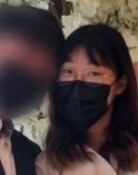Youker and Sanker
Youker and Sanker
Posted October. 13, 2016 07:30,
Updated October. 13, 2016 07:45
A Chinese tourist is called "Youker." Then what about "Sanker"? Sanker does not refer to tourist who search for inexpensive attractions and souvenirs; Sanker is a Chinese word for individual tourists who enjoy free travelling. Likewise, the travel patterns of Chinese visiting Korea are evolving - less Youker groups, more Sanker individuals.
When a nation sees economic development, the number of individual tourists is apt to rise, regardless of where they are from. So did Koreans who enjoyed overseas travels after the overseas travel ban lifted in 1989, and the Japanese who saw the ban lifted in 1964. As China's per capita income is heading to the 8,000 dollar mark, the Chinese people are also enjoying free individual tours suited for their own taste rather than package tours led by flags held by guides. According to a survey conducted by the Korean Tourism Organization, seven out of 10 Chinese tourists who visited Korea during the Spring Labor Day holidays were independent travelers. Furthermore, Chinese entrants via Incheon International Airport rose by 210,000 to 1.46 million year-on-year on Oct 1-9.
According to the July report on "The New Youkers' in Town; Sankers" released by Samjung KPMG Economic Research Institute, Sankers are youngsters born in 1980s to 1990s, and do not hesitate to open their purses when it comes to enjoying the present lives, instead of pursuing economic stability through savings. While the past Youkers swept the shelves of specific cosmetics brands, Sankers now enjoy their own customized way of shopping exclusively based on their personal tastes. In addition, while middle-aged and elderly Chinese frequently visit Myeongdong, Sankers shop at Gangnam. Chinese tourists' spending during the recent holiday season clearly proves this trend; Shinsegae Gangnam branch and Hyundai Department Store COEX branch saw their sales increase by 77 percent and 65 percent, respectively, while the main branch of Lotte Department Store in Myeongdong rose by only 27 percent.
In addition, Sankers are highly interested in experiencing new and local cultural events, rather than the same-old package products. According to Cheil PengTai, a digital marketing service company under Cheil Worldwide, "Hongik University area" was the most frequently searched hotspot by Chinese tourists from Sep. 7 to Oct. 7. Ewha Mural Village, which failed to make it to the Top-20 last year, has jumped to the 5th place. Other rising attractions included Gwangjang Market area (6th) and spas in Dongdaemun area (15th). In a nutshell, an on-target marketing strategy must be aimed to young Sankers who refuse to follow the tour guides' flags.
고미석기자 mskoh119@donga.com
Headline News
- Med professors announce intention to leave hospitals starting Thursday
- Bridge honoring Sgt. Moon Jae-sik unveiled in Pennsylvania
- Chief of Staff Chung tells presidential secretaries to stay away from politics
- US FTC bans noncompete agreements
- N. Korea launches cyberattacks on S. Korea's defense companies







